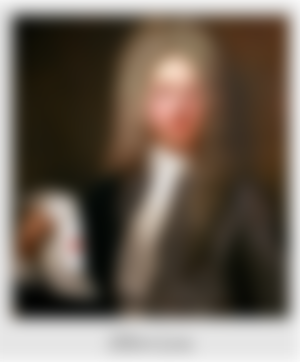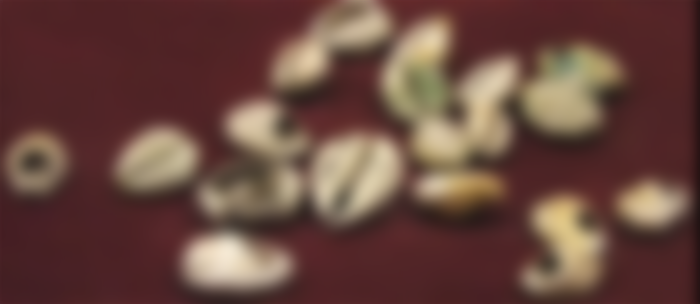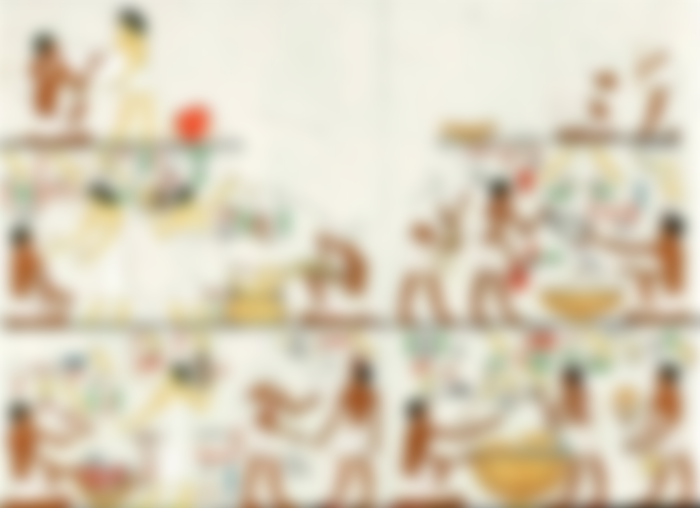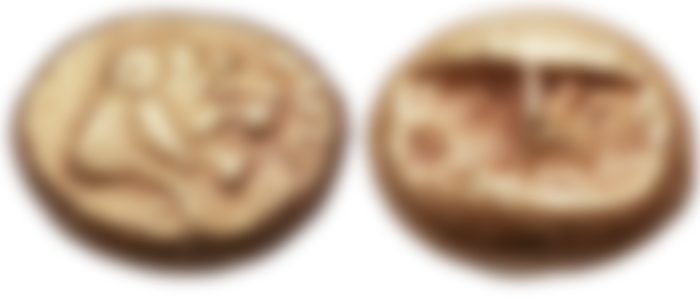For more than 4,500 years, money has controlled and manipulated our lives, whether the method of payment is in rare shells, coins made of cheap metals, stamped plates made of precious metals, or in the latest cryptocurrency.

We go back in history, where we discover that silver bars were the first money in the world. They were first introduced in Mesopotamia (present-day Iraq) with the idea of boosting trade. Judging by the records preserved on the cuneiform tablets, silver was the first standardized method of payment. The metal was forged in the form of sticks, which were cut and measured during the realization of the work. All indications are that silver was introduced for purely practical reasons. In developed Mesopotamia, where trade flourished, it became difficult to trade by simply exchanging goods such as cattle or grain. According to historians, clay tables at that time, among other things, were used for some kind of bookkeeping during larger transactions.

Before using silver for thousands of years, and therefore copper as money, ancient China had a specific monetary system - precious sea shells. Of course, they were not money in today's sense, but 3-4000 years ago they were used as a means of payment due to their convenient shape, easy counting, strength and likable structure. The monetary unit was the “peng” which translated into shell language represented two piles of ten shells, or as it is symbolically represented, two clusters of shells. At the end of the Shang Dynasty (from 1675 to 1029 BC), due to the large-scale exploitation of shells, they became a scarce resource, so shell-type forms were made of stone, ceramics, bone, jade and copper.

At the very threshold of the new era, during the period of Spring and Autumn and the Warring States, the first bronze coins in the form of agricultural tools appeared in China.
The forms of coins varied, and almost each of the warring Chinese states had its own characteristic money until the unification of China (221 BC) under the Qin dynasty. Round coins with a square hole in the middle, which had been used in the state of China until then, began to be used throughout China. Even today, they are considered a symbol of happiness and wealth, and they reflected the ancient Chinese understanding of the world, where the sky is round and the Earth is square.

The shellfish payment system outlived ancient China. In the regions around Uganda, for example, in the 1700s, two shells were needed to buy a woman. However, as sea routes expanded, the shell experienced a major devaluation as a coin. As early as 1860, a woman in Uganda cost over 1,000 shells. Before the introduction of coins, one of the most prized coins in Ethiopia was a plate of salt, in some periods more valuable than the same weight of gold. Two plates of salt were exchanged for 16 kg of cereals. In ancient Egypt, there was metal money, but it was used exclusively by rich merchants in transactions with foreign partners. Among the people, the most widespread coins were still cereals. The monthly salary of the workers was about 200 kg of cereals, from which they could buy other necessities for their family. As it was not practical to carry sacks of grain for purchase, public banks were established where the population deposited their reserves, received receipts and based on them took other goods in that or other commodity banks. To prevent abuse, the Central Bank of Alexandria controlled and kept copies of all receipts.

Coins that are considered to be the forerunners of today's coins originated in the rich kingdom of Lydia in Asia Minor, which was located on the territory of today's Turkish provinces of Manisa and Izmir. At the time of the greatest rise of Lydia, during the reign of King Croesus (also known by the saying "rich as Croesus"), around 660 BC. the first coins in the world were minted, minted from silver and gold. Although there were various forms of money in Egypt, China and other ancient kingdoms, Lydian coins made of precious metal are today considered the "Adam of coins", because this type of payment only came to life there in its full form. The most important novelty was their standardization, because they now had a precisely defined weight, purity and appearance in accordance with their value. The first standardized money was put into circulation in Lydia around 640 BC.

Trade was simplified, no more measurements were needed metals for payment and complicated pricing. a big a number of world merchants came to Lydia, which gave birth to more one phenomenon of that time - shops, or retail stores. Every store in the world was created in the image of Lydian shops, trading venues at permanent locations
As the coins were initially made of precious metals, it did not take long for a new class of "small businessmen" to appear - counterfeiters. In Greece at that time, for example, skilled counterfeiters made counterfeit money from cheap copper and poured it with a thin layer of gold or silver. The skill of forgery was only perfected, and the techniques of verification could not follow it. One of the best of that time was the control marble tile in which gold needles of different purity of gold were imprinted. Every major merchant had one, and he compared the appearance of the money obtained with the lines in black marble. Those who did not have it, or did not trust this technique, in case of doubt resorted to drastic measures and - cut the gold coins in half to check the center of the coin. Finally, in the ninth century, the Chinese had plenty of counterfeit money. They were the first to decide to make money from cheap materials, keeping its traditional shape with a rectangular hole in the middle. The practicality of coinage, which had a precisely defined symbolic rather than the actual value of the material from which it was made, began to conquer the world. As early as 1023, a state administration for the printing of paper money was formed in China, the production of which proved to be much cheaper, and the possibilities for counterfeiting at that time were much smaller.

Trade was simplified, no more measurements were needed metals for payment and complicated pricing. a big a number of world merchants came to Lydia, which gave birth to more one phenomenon of that time - shops, or retail stores. Every store in the world was created in the image of Lydian shops, trading venues at permanent locations Rich Italian families saw their opportunity and established the first banks in Europe. They spread their business across the old continent and earned enormous wealth. However, interest-bearing loans were not allowed, like today's banks, to be offered publicly. That was not in accordance with the Bible. According to the prophet Ezekiel, greed was a grievous sin, classified as murder, rape, robbery: The solution to this problem was in issuing bills of exchange. The one who lent money "sold" the bill to the banks at one price, and bought it at the one that covers the loan and interest. In that way, there was no formal loan, but only the purchase and sale of documents.

Paper money became the standard in Europe only at the end of the 19th century, when the old continent recovered from the monetary blow dealt to it at the beginning of the 17th century by the first modern European banker - the gambler and mathematical genius John Lowe. He studied finance in London, and amassed a great fortune on maps, performing complicated statistical calculations in his head. He opened the first public bank in France, and in the meantime managed to persuade French King Philip II to a pioneering financial maneuver, convincing him to recover the country from public debt by issuing banknotes whose liquidity was guaranteed by the king himself. Sam became the director of the company "East India", which traded with the French colonies and sold shares of the company, which grew at an incredible speed. The need for Royal bonds also grew, and they were generously printed by Philip II. In just a few years, the value of the company’s stock has risen by 3600%. Then, suddenly, the soap bubble burst. The overestimation of the value of the French colonies finally came to fruition. Overnight, both the bank and the John Lowe company went bankrupt, and France fell into a major financial crisis that shook the whole of Europe. Until the late 1790s, France did not dare to handle paper money.

The 21st century has brought crypto-money, the virtual coin Bitcoin, based on the idea of an anonymous monetary system controlled by all its participants, rather than a central institution like the central bank or the state. Aware that money today does not have its real value based on tangible capital, specifically in the gold reserves of the issuing state, but rather relies on "delayed reciprocity" based on the stability of national and global financial institutions, Bitcoin creators have decided to take a different approach. The cryptographic system allows two parties to trade directly, without the mediation of the institution that would approve the transaction. The secret to the success of the Bikoin system is, among other things, that it is aware at all times whether a particular transaction is valid, and records every transaction that has ever taken place.









Money is credited with another, negative trait: to change people for the worse. A typical example is when someone who gets rich changes his relationship with people with whom he previously hung out and got along well. When someone starts avoiding former friends, and even relatives, when he treats them with contempt, what can they conclude than that - money corrupts people. It becomes a truth that people warn their children about. Thus, the belief that people are either good and poor or corrupt and rich is passed down from generation to generation. The consequence is that sometimes the poorer have a comforting experience of moral superiority.